Key Takeaways
- Enduro Mountain Biking is a style of MTB race. It combines downhill speed with endurance trail riding. Riders race timed downhill stages, while climbs are untimed but have cutoffs. Events span from 15-40 miles.
- Enduro racing is great for bikers of all levels. Individual starts and a friendly community make it accessible and fun for beginners and pros alike.
What Is Enduro MTB?
Enduro mountain biking is a race where the main competition happens on downhill trails. Riders tackle several timed downhill stages as fast as possible, aiming for the best combined time.
Between these racing sections are untimed uphill or flat “transition stages,” which riders must complete within a set time limit but aren’t racing against the clock. Only the downhill stages count toward your overall race time, meaning the fastest descender, not necessarily the best climber, takes the win.
In the mountain biking world, it’s tougher and more technical than casual trail riding, yet far more approachable and less extreme than full-on downhill racing. It’s the ideal choice for riders who love speed and challenging terrain but also want the satisfaction of covering diverse trails and testing their endurance.
What Happens in an Enduro Race?
Enduro MTB races usually cover 15–40 miles, with 3–6 timed stages depending on the event. The terrain varies, containing everything from flowy singletracks and rooty climbs to rocky descents and tight switchbacks. Find out more about the primary elements of an enduro race below:
-
Timed stages
Timed stages are usually downhill runs requiring speed and control.
In shorter races, timed stages often last around 20 minutes, while longer races’ timed stages often last an hour. Good line choice and bike handling skills are key here. -
Transition stages
Riders must pedal or hike to the next start gate. These climbs or flat connectors are not timed, but you must finish them within a cutoff window.
Transition stages do give you some time to catch your breath and drink some water while you head to the next timed stage. -
Race formats
Some races are single-day sprints, and others span multiple days with varied terrain and weather conditions. Multi-day enduro MTB events often include longer days, more elevation, and overnight logistics.
Why Enduro MTB Appeals to Everyday Riders and Pros
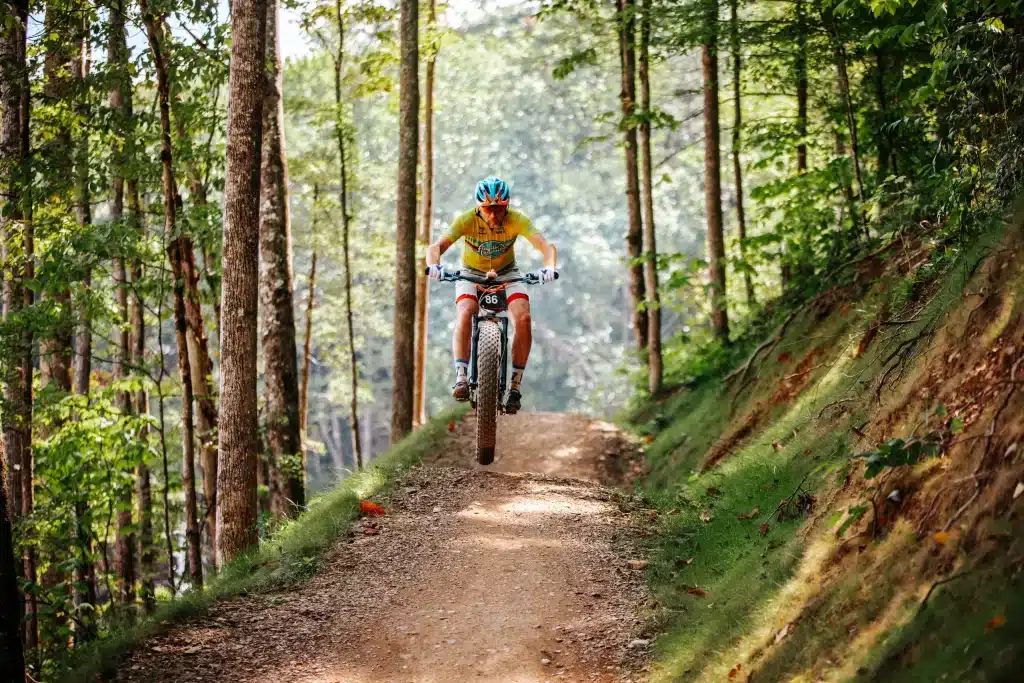

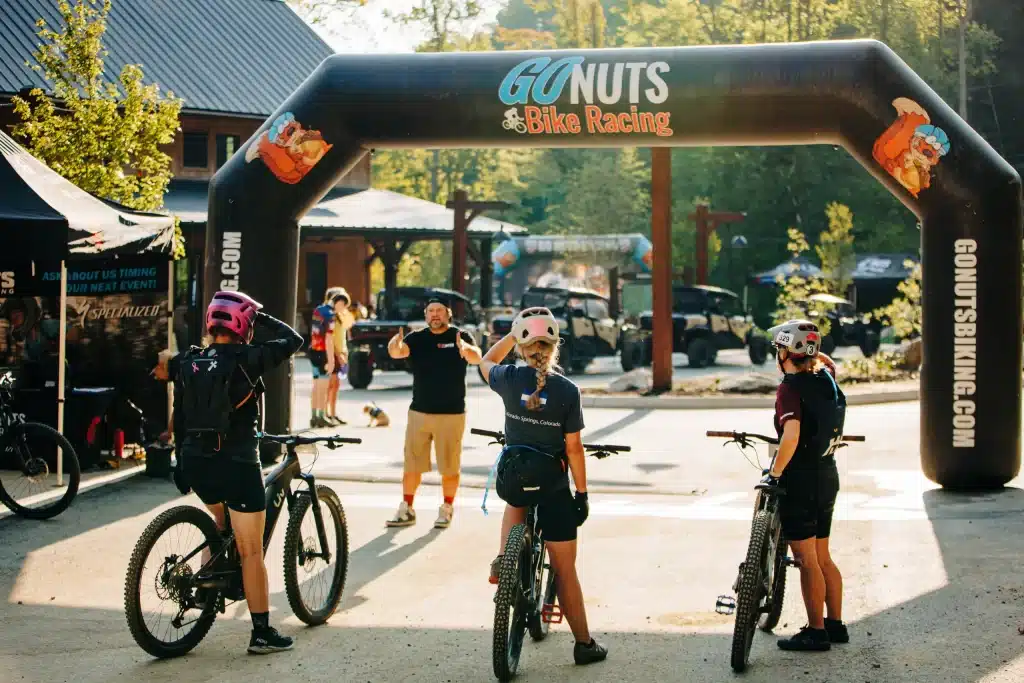
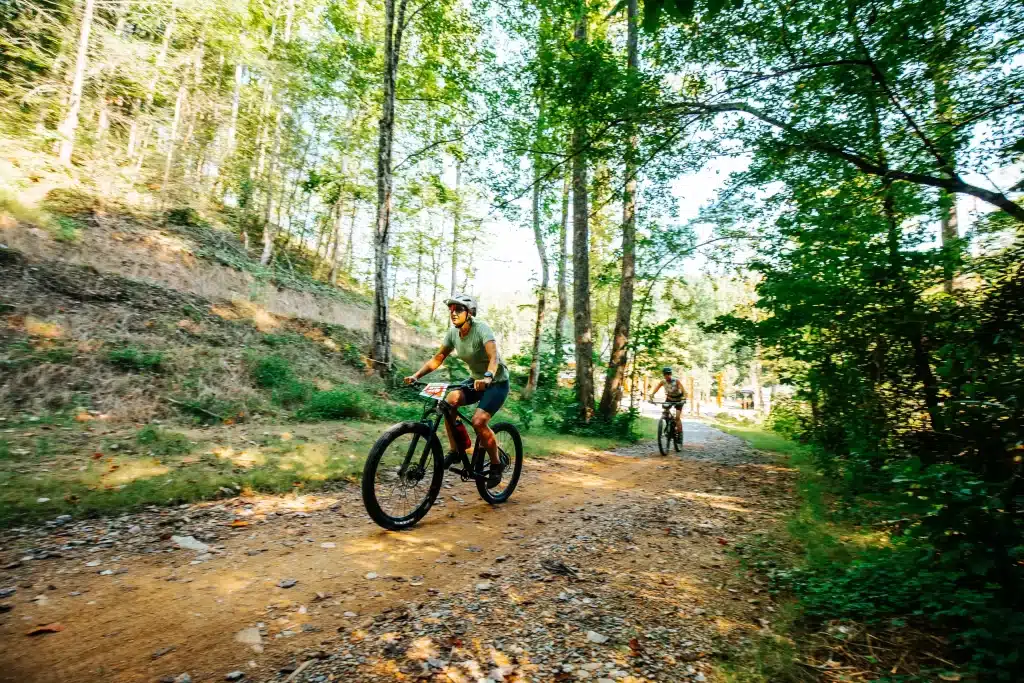
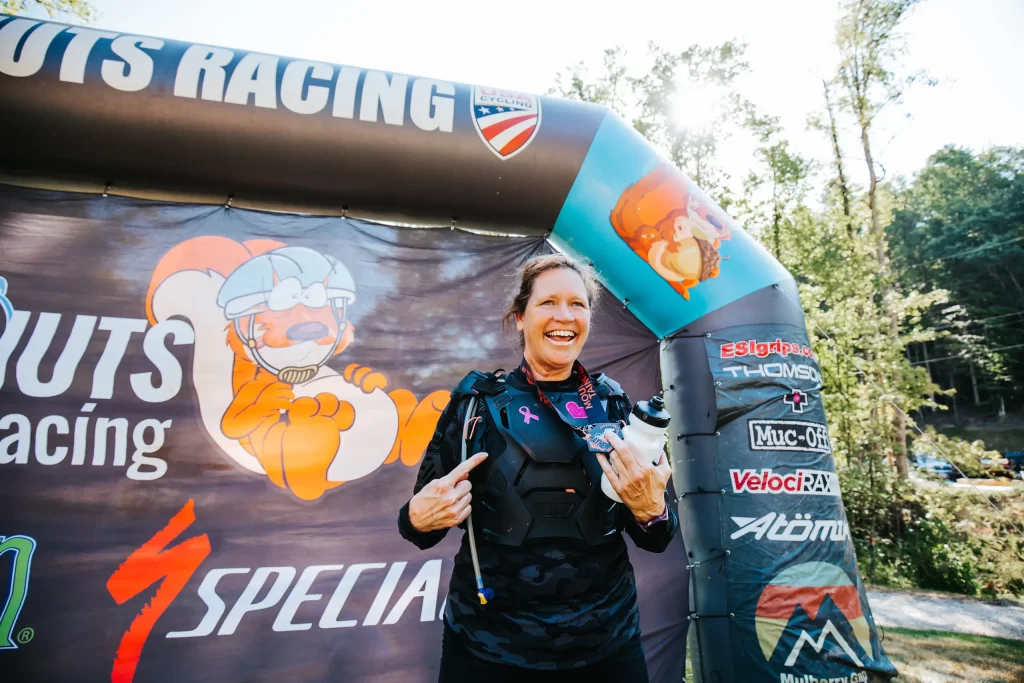

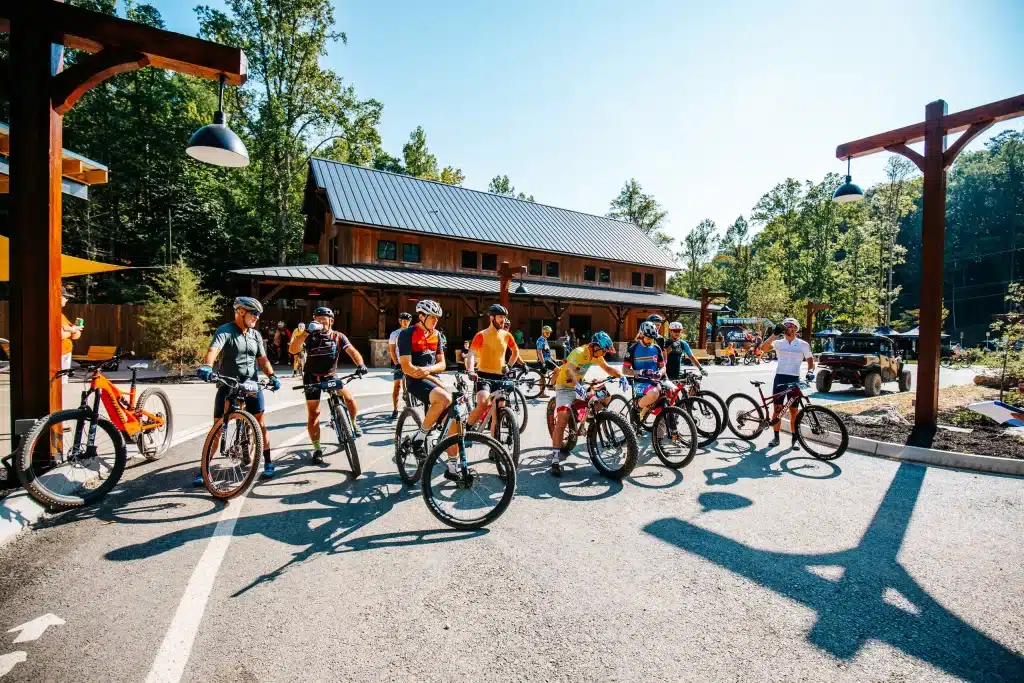
Unlike many forms of racing, enduro mountain biking is designed to be inclusive of all skill levels. At the beginning of the race, each rider goes one at a time, without any mass starts that could put extra pressure on new riders. Once you start biking, you’ll have about 30 seconds to a minute before another rider starts down the trail to avoid crowding or needing to navigate a trail with riders on either side of you.
During the race, you’ll share the trail with pros and amateurs alike. At the end of the race, you’ll have the chance to compare your times to everyone else’s, giving you the chance to see how you measure up and make new goals for future races.
In our experience, the enduro MTB community tends to be very friendly and supportive. Most other riders will be happy to give you advice, help solve any issues with your bike, and even get together for a meal or drink after the race!
How to Know If Enduro Biking Is Right For You
Enduro might be your next big adventure if:
- You love the balance of climbing vs descending.
- You want a race vibe without the intensity of XC or DH.
- You already ride technical terrain and want to test your limits.
- You’re looking for a new way to explore trails and expand your mountain biking skills.
What Kind of Bike Do You Need?
Enduro racing demands a specific setup. Enduro mountain bikes are designed to handle aggressive descents while staying efficient enough to climb between stages.
Key features of an enduro bike include:
-
Full suspension frame with 140–160mm of travel
Suspension cushions rocks, roots, and drops and keeps your rear wheel planted on the ground for better control. Around 140 mm is ideal for mixed terrain; bump it to 160 mm when you’re tackling steeper, rockier descents.
-
Dropper seat post for dynamic position changes
A dropper post allows riders to quickly lower their saddle before a descent and raise it again for climbs. This versatility helps maintain balance through varied terrain.
-
Slack head tube angle
A slack head tube angle of around 63–64 degrees gives the bike a more stable feel at high speeds and on steep descents. It also improves cornering and reduces the chance of going over the bars on rough trail sections.
-
1x12 drivetrain with a wide-range cassette
A single front chainring simplifies shifting and reduces mechanical issues, while a wide-range cassette in the rear provides enough gearing for both steep climbs and fast descents.
-
Reinforced frame and durable wheelset
Enduro bikes are built to withstand heavy impacts, repeated abuse, and hard landings. Wider rims, tubeless tires, and robust hubs are common to handle the demands of race conditions.
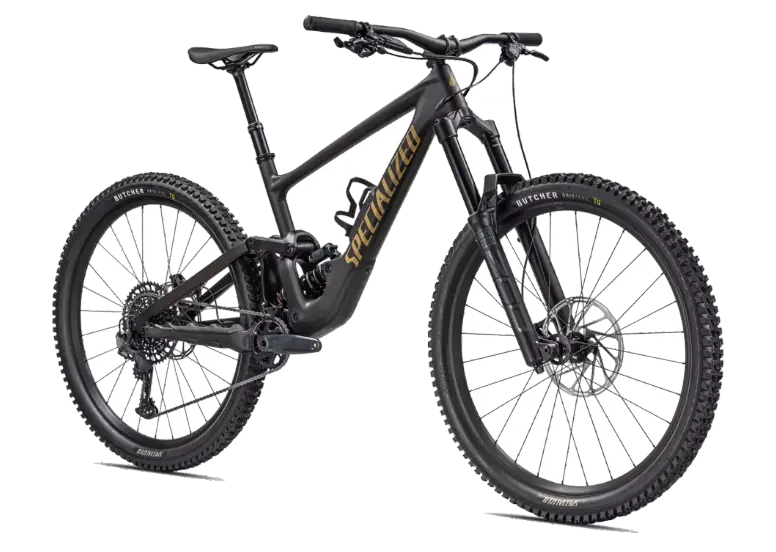
Electric enduro mountain bikes are also becoming popular. With pedal-assist capabilities, they allow riders to conserve energy during transition stages or extend their rides without compromising downhill performance. Keep in mind that many Enduro races won’t allow electric mountain bikes, so always check a race’s rules before you arrive with an electric bike.
Why Shouldn’t You Use a Trail Bike for Enduro Racing?
While trail bikes offer a lighter, more nimble ride that’s perfect for everyday exploring, enduro bikes are heavier, more rugged, and tuned for descending aggressively over technical terrain. Riders looking to compete or ride more challenging terrain will benefit from the added suspension, geometry, and stability of an enduro build. You wouldn’t ride a technical trail with a road bike, – in the same way, you’ll want to stick to enduro bikes while competing in enduro races.
Do You Need Bike Gear for Enduro Races?
Your gear setup can make a huge difference during training and on race day. Here’s what you’ll want to pack or wear:
-
Helmet
A full-face helmet or convertible helmet (with a removable chin guard) is standard for most races.
-
Pads
Knee, shin, and elbow pads are strongly recommended, especially for rocky or rooty stages.
-
Gloves and Long Sleeves
Wearing long sleeves and gloves can provide protection from branches, bushes, or crashes, and help you maintain your grip on the handlebars.
-
Hydration Pack
Enduro races rarely have aid stations. A hydration pack lets you carry water, snacks, and repair tools you might need, such as a spare tube, CO₂ inflator, and a multi-tool.
-
Goggles or Sunglasses
While you fly down a hill, you don’t want sun or debris getting in your eyes, so goggles or sunglasses make a great equipment choice.
6 Tips for Preparing for Your First Enduro Race
If you’re thinking about entering an enduro race, the following tips can help you get the most out of the experience:

-
Train smart
Mix long cardio rides with interval workouts to improve both endurance and explosive power.
-
Practice technical terrain
Spend time on steep descents, tight corners, rock gardens, and rooty trails.
-
Strengthen your core and legs
Strong muscles help you stay balanced and absorb hits over long descents.
-
Get comfortable with your gear
Ride with your full kit before race day so you know how it feels and where everything is.
-
Pre-ride if possible
If the course is open in advance, ride the timed stages to choose your lines and understand what to expect.
-
Pace yourself
Don’t go all-out on Stage 1 and bonk by Stage 4. Enduro is about consistency over multiple segments.
Give Enduro Mountain Biking a Try at Wildside
Ready to put your skills to the test? WildSide’s enduro-style trails in the Smoky Mountains are designed to challenge and excite, making them perfect for both beginners and seasoned riders. With thrilling descents, beautiful views, and supportive staff, it’s the ideal place to explore the world of enduro mountain bike racing.
Learn more about our expansive mountain biking trail network and bike rentals today!